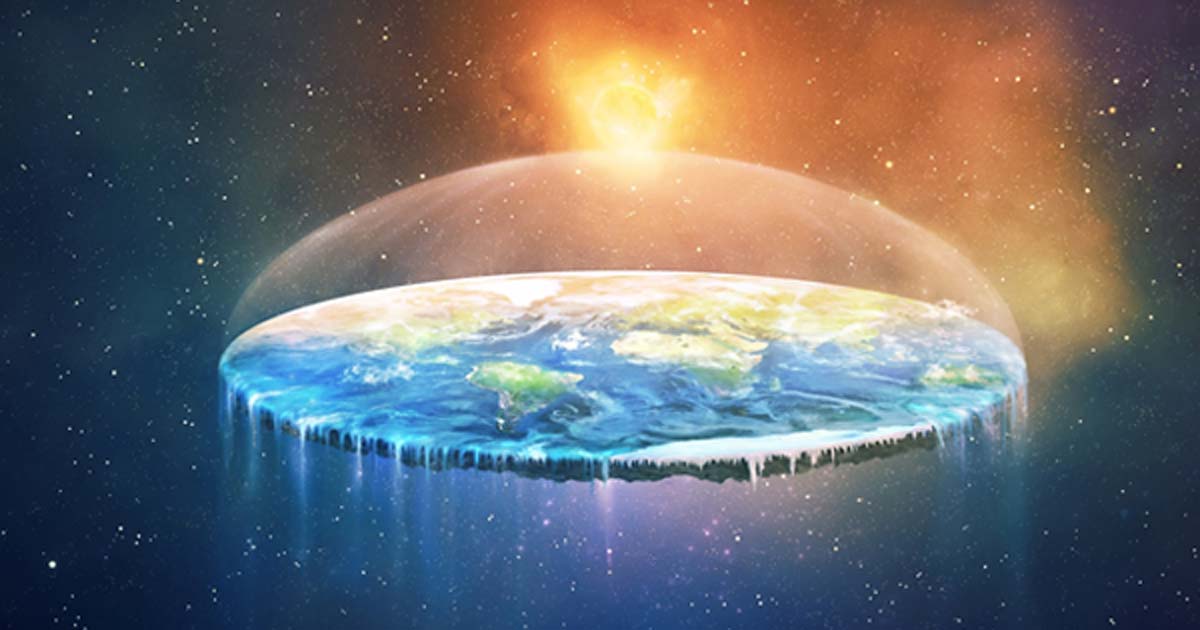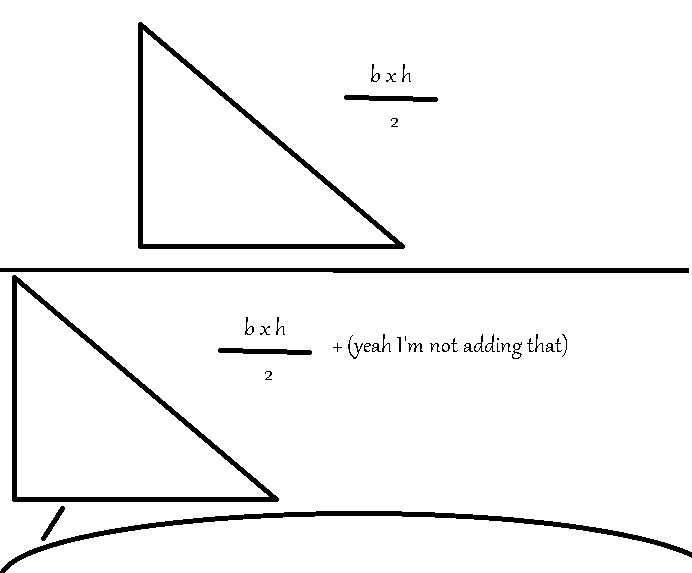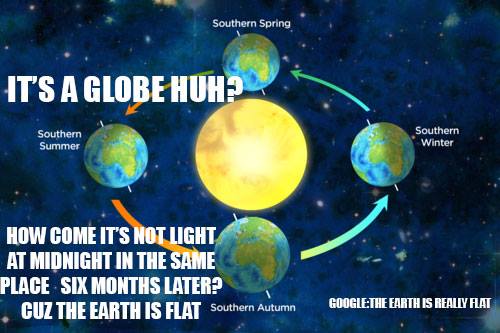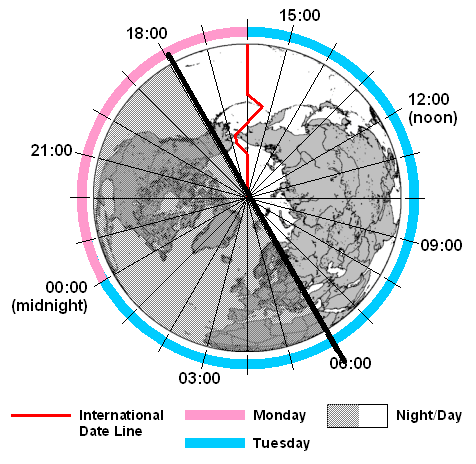dad
Undefeated
They are belief based.The ages of the mountains are not assumptions.
Welcome to Religious Forums, a friendly forum to discuss all religions in a friendly surrounding.
Your voice is missing! You will need to register to get access to the following site features:We hope to see you as a part of our community soon!
They are belief based.The ages of the mountains are not assumptions.
The stars were put in the firmament. So we are not talking about the sky over earth."Firmament" is just an archaic term for the sky. Not sure what's so confusing about it.
I was talking about the fact that the Earth is a sphere. Erasthothenes first showed that about 2,200 years ago. My figure was rather accurate since I was going on memory:
Eratosthenes - Wikipedia
As to the heliocentric solar system it was Copernicus that first supported that idea. But you are all over the place here, That leads to a bit of confusion in response to your errors.
It means both: Definition of FIRMAMENTThe stars were put in the firmament. So we are not talking about the sky over earth.
You are using very poor "logic". The reason that some Greeks are still sited is because they hit on the correct answer way back when. We have endless evidence that the world is a round and no scientific evidence that says that it is flat. And I have a feeling that all of the "bad math" would come from you.Francis Bacon apparently said, "By far the best proof is experience."
It is not enough to hang on to the words of old dead guys. You have to at some point verify whether their words ring true for you.
I have no problems at all if you were to trust this guy personally. It's when you get up in my face about what I should be accepting, then use faulty math or science and expect me to agree that I have an issue. I could debate this guy, but I have church in like an two hours, and have to get ready.
So the point for me, and it may not be for you, is whether such people actually proved things, or whether it's conjecture.
-I have no idea about this Greek guy and it voids my post if I go check (Kindle)
-Copernicus did in fact propose it. But it was Galileo who actually used a telescope to try to prove it.
-Galileo showed that distant planets do revolve around in orbit. But as flat Earthers are quick to point out, "But ths Earth is not a planet." But more importantly , you cannot have a scientific belief based on extending conjecture. I think it was Saturn or Uranus that read about (one of those "ten facts about..." ) which supposedly orbits upside down and backwards from that of other planets. If we're going by extending conjecture from what we know, then we know planets do not all have to move the same way. By that logic, a planet shouldn't need to move at all. There are also tidally locked planets so yeah.
- Newton had an incredible amount of axes to grind, so while the basic theory of gravity is self-evident, it requires suspension of disbelief to accepr that it is some sort of catch-all for impossible conditions on Earth.
Besides which, if we're gonna trust old Greek dudes, what about Plato, who basically said this world we perceive might just be a sort of cave showing us images? Or Archimedes, who if I remember correctly built basically a giant ant-burner. A solar focusing war engine requires four things:
-Good quality glass free of moisture and impurities
- A sunny day
-Very slow movement (impossible with orbit)
- Perfect angles (impossible with curvature)
Yet this device works and Archimedes is known as a great scientist. This guy? I heard about him in class, but I've already forgotten his name. He had no practical application, which I value far more than words and theory.
Hey! My prediction came true! The bad math did come from you. Geometry is part of math and the only "straight line" in our world when traveling great distances is a Great Circle on a globe. Navigators know this and know how to calculate the route one must follow on a Mercator projection:(Wow I quoted the wrong text)
Well suppose we didn't use my "perfectly good" map. Let us assume for argument's sake we aren't using this. Let is suppose we are sailing, and lack a radar and sonar, just having tools prior to electronic navigation since we have a cheap boat.
What tool do we use? Probably a compass, a straightedge, a ruler, maps, and that math rotation this for drawing circles if we have to curve.
What tool are we definitely NOT going to rely on? A globe. Now why is that? Well, let's start by saying that whether we view the Earth as centered around the North Pole in a circle (which as you point out has issues with stars unless we segment the sky somehow) or whether we draw it as an actual square (unlikely that's accurate either), we have a necessary need when sailing. We need to be able to drawa STRAIGHT LINE. Guess what is on a globe not present in either latitude or longitude? A straight line. The Gleason is probably not acceptable for sailing, unless I were to travel north or south, and discover in fact that space curves to the left or right as I sail. It may, but as a sailor, I need to think of at least one dimension as able to chart in a straight line. Otherwise, I will wind up in a continent or country different from intended, spiraling about. In fact, if I were to correct for the latitude and longitude curves, I'd probably end up confused, and back where I started. Every REAL navigator, however, pulls out a map and the ruler.
Gleason is helpful for understanding the probable state of the world, but practical is > theoretical always. I'd trust Gleason second to a navigational map then a globe last. I'd trust a radar/sonar first, since I figure these were invented to help stupid ppl who got navigating wrong. Coincidentally, a radar has the exact rotary display as you'd find on Gleason though.
Btw, to answer a previous post Subduction, both the firmament and the surface are designed to hold water IN not keep it out. I want you to get a common frypan and its cover, and fill it with water. Then I want you to boil it (evaporation), then put it in a fridge (condensation or "rain") . All of this works.
Now, I want you to spin it around while pulling it or pushing it at a steady speed around another kettle (orbiting the Sun). You'll notice as the pan eventually flops to the ground that you have a huge mess on your hands. That mess, is your burden of proof, and you have to clean it up before your Mom or Dad (God) gets back. I also want you to try scooping up the water in an upside down pan (the impossibility of holding water in a curved Earth) and then I want you to place several metric weights on top of this upaide down pan and see if they hold that water in place (meant to show that gravity cannot cure basic truth). Looks like you still have a mess, aren't you going to clean it up?
Great, but since the sun and stars were in the firmament, that means any waters that were on the other side of that firmament would be on the other side of where the stars are. So there could be no canopy theories or explanations that involve just earth that fit.
You are using very poor "logic". The reason that some Greeks are still sited is because they hit on the correct answer way back when. We have endless evidence that the world is a round and no scientific evidence that says that it is flat. And I have a feeling that all of the "bad math" would come from you.
All theories can be questioned. The problem is that so far the heliocentric globe model has consistent answers to questions that work. You can't claim the same for your beliefs. Do you remember your failure with "speed"?The word is "cited". A citation refers to a quote. Sited means where geographically you found something. Archimedes is still cited. What's his name is only mentioned when someone wants to haul out round Earth theory and the two standbys (Copernicus and Galileo) won't do. "See? He proved it back then!" With no lens of any kind I imagine. With no means of measuring the Earth's location in regards to the sun. The best he probably came up with (didn't even bother reading) was something like measuring the Earth with math or something. But let's be honest, I've seen birds divebomb our windows and knock themselves senseless because they have a false perspective of another bird in the window. If you do not have the ability to question your own theory, you shouldn't be telling people about logic.
What do you think the point of debate is? Is it to bully someone into going along with everyone else? Congratulations then, you're a staunch guardian of conformity. But no, I will not eat green eggs and ham, no matter how it's presented. No, we don't have to agree. The point of debate is to find common ground. When this is lost, it's argument not debate. Basically, you're not talking to me, you're not thinking, and you're not connected.
Do me a favor, and actually try. Figure out if I'm totally wrong, half-right, or whatever. If you're taking Greek guys word for it, you're doing things wrong. I gave you several pieces of homework. Starting with jogging around the block. Then dynk your globe in the water. And spin frypans around. Why? Because when you worry about proving right, you've lost the sense of wonder that made ppl want to do science experiments.
The scientific method is to test results. If you aren't testing (even lame testing I came up with just for fun), what you have isn't science. And you can tell me all you want about how my logic isn't good but I'm afraid I don't care.
Btw, Mercator Projection is just that. A projection. It cannot be called a map, and no navigation system will ever use it.
It appears as if God used the water suspended
A water canopy surrounding the earth would have created
The fact that they have unearthed palm trees in Siberia lends credence to that situation IMO.
Jesus said his return would see world conditions similar to those times....
The Oort cloud, or the Opik-Oort cloud, which is named after Jan Oort, is a spherical cloud that surrounds our solar system, a cloud of predominantly icy objects such as comets that are comprised of mainly hydrogen, oxygen=water, ammonia and methane, and extends up to about a light year from the sun and defines the cosmographical boundary of our Solar System and the region of the suns gravitational dominance. Here is the Firmament, the great spherical vault within which is found the sun, moons and planets of our solar system, the dome of ice above us.

Continued from post #16.
It was from the galactic nebular cloud, which was the residue of the heaver elements that were exploded off with the great super nova, which was the death of one of the gigantic earlier generation Stars that our Milky-Way galaxy would be formed in the second creative period=day, as the active universal forces brought about a division of the Solar nebular cloud [The Waters Below] from the Galactic nebular cloud [The Waters Above].
The accretion of the galactic nebula disk, which was being attracted to the central Black Hole around which it had begun to orbit, transferred angular momentum outward as it transferred mass inward, it was this that caused our solar nebula to begin to rotate and condense inward, bringing a division of the solar cloud, from the galactic cloud, or the waters above from the waters below.
Within the greater galactic nebular cloud, which was slowly beginning to revolve around the Black Hole that anchored it in space, a piece of the larger cloud complex started to collapse about five billion years ago. The cloud complex had already been "polluted" with dust grains from previous generations of stars, so it was possible to form the rocky terrestrial planets as gravity pulled the gas and dust together, forming a solar nebula. As the cloud=waters of the solar nebula collapsed, its slight rotation increased. This is because of the conservation of angular momentum.
Just like a dancer who spins faster as she pulls in her arms, the cloud began to spin as it collapsed. Eventually, the cloud grew hotter and denser in the centre, with a disk of gas and dust surrounding it that was hot in the centre but cool at the edges. As the disk got thinner and thinner, particles began to stick together and form clumps. Some clumps got bigger, as particles and small clumps stuck to them, eventually forming planets or moons. Genesis 1: 6—9. As the heavenly cloud was gathered together in one place, dry land, or rather planets began to form. Near the centre of the condensing cloud, where planets like earth formed, only rocky material could stand the great heat. Icy matter settled in the outer regions of the disk along with rocky material, where the giant planets like Jupiter formed.
As the cloud continued to fall in, the centre would get so hot that it would eventually become a star and with a strong stellar wind, would blow away most of the gas and dust from which the planets of the solar system had been formed.
By studying meteorites, which are thought to be left over from this early phase of the solar system, scientists have found that the solar system is about 4.6 billion years old! As the solar nebula collapsed, the gas and dust heated up through collisions among the particles. The solar nebula heated up to around 3000 K so everything was in a gaseous form. The solar nebula's composition was similar to the present-day Sun's composition: about 93% hydrogen, 6% helium, and about 1% silicates and iron, and the density of the gas and dust increased toward the core where the proto-sun was: [PROTO SUN.]. The inner, denser regions collapsed more quickly than the outer regions.
PROTO-HUMANS WERE NOT HUMANS AND THE PROTO-SUN, WAS NOT YET OUR SUN.
Around Jupiter's distance from the proto-Sun the temperature was cool enough to freeze water (the so-called "snow line" or "frost line"). Further out from the proto-Sun, ammonia and methane were able to condense. There was a significant amount of water closer to the Proto-sun, but could not condense. When the solar nebula stopped collapsing it began cooling, though the core that would later form the Sun remained hot.
This meant that the outer parts of the solar nebula cooled off more than the inner parts closer to the hot proto-Sun. Only metal and rock materials could condense (solidify) at the high temperatures close to the proto-Sun. Therefore, the metal and rock materials could condense in all the places where the planets were forming. Volatile materials (like water, methane and ammonia) could only condense in the outer parts of the solar nebula.
Because the density of the solar nebula material increased inward, there was more water at Jupiter's distance than at the distances of Saturn, Uranus, or Neptune. The greater amount of water ice at Jupiter's distance from the proto-Sun helped it grow larger than the other planets. Although, there was more water closer to the proto-Sun than Jupiter, that water was too warm to condense. Material with the highest freezing temperatures condensed to form the chondrules that were then incorporated in lower freezing temperature material. Chondrules (from Ancient Greek chondros, meaning grain) are round grains found in chondrites. Chondrules form as molten or partially molten droplets in space before being accreted to their parent asteroids.
Any material that later became part of a planet underwent further heating and processing when the planet differentiated so the heavy metals sunk to the planet's core and lighter metals floated up to nearer the surface.
Because of its great compression, the core of the proto-Sun finally reached about 10 million Kelvin and after the planets of the solar system had been created, the hydrogen nuclei started fusing together to produce helium nuclei and a lot of energy. It was then that the proto-Sun "TURNED ON" and became our Sun, which produced the strong winds called T-Tauri winds named after the prototype star in the constellation Taurus.
These winds swept out the rest of the nebula that was not already incorporated into the planets. With most of the cocoon gas blown away, the new star itself becomes visible to the outside for the first time. This whole process took just a few hundred million years and was finished by about 4.6 billion years ago. At the distance of about one light year from the earth, is the great icy Dome, that is the boundary of the firmament of our heavens, in which the sun, moon, and planets of our solar system were created.
Actually sat down and bothered reading how Pythagoras supposedly "proves" the Earth is round by using math equations. And how what's his name "measured" the circumference of Earth. You know that must have been quite a feat given that the known world at this time was minus about three continents! Wouldn't you need at the very least a radius to start figuring out things like arc and circumference? From where did he pull such measurements? You expect me to believe that he was allowed to cross several countries with a rope or whatever crude measuring tool he had, actually getting Earth's diameter? No likely. He, as in you, relied ob math in his head or from secondhand sources versus going outside and running the measurements himself. You might be interested to know that in this day and age we still need surveyors. What? We don't tak the word of these two and just divide the length and height of this bridge by the circumference of the Earth? No. Some people actually work for a living. They get the measurements themselves.

(Wow I quoted the wrong text)
Uh huh. Like this...

(Ditto the problems with .png files mentioned by heyo)
About my speaking earlier above about Earth being a 'water world' (meaning mostly covered in oceans, tho I'd not myself call our current 70% enough to be labeled 'water world', but instead something up nearer to 90%+, though that's a subjective line admittedly) -- did you end up later finding articles that help show that's considered a strong possibility?That's a good article, thanks for the link. It does not say anything much, however, about the amount of water in oceans on the early Earth, only mentioning it in passing.
(Wow I quoted the wrong text)
You show your ignorance of basic maths. Here is an article a ten-year-old could understand.
Who Discovered The Earth is Round? | ScienceBlogs
One short excerpt...
If he could then figure out the distance from Alexandria to Syene, since he knew the angular difference between the two cities, he could figure out the circumference of the Earth! If only Eratosthenes had a grad student, he could have sent one to make the trip, and measure the distance!
Instead, he was forced to rely on the reported distance between the two cities. The most "precise" measurement of his day?

Image credit: Memphis Tours.
Travel-by-camel. (So I can understand criticisms of his accuracy.)
Perhaps, if you read the entire article (ten minutes) you would come to understand why no one needed "at the very least a radius to start figuring out things like arc and circumference? "
Perhaps, if you read the entire article (ten minutes) you would come to understand why no one had to "cross several countries with a rope or whatever crude measuring tool" to get the Earth's diameter.




